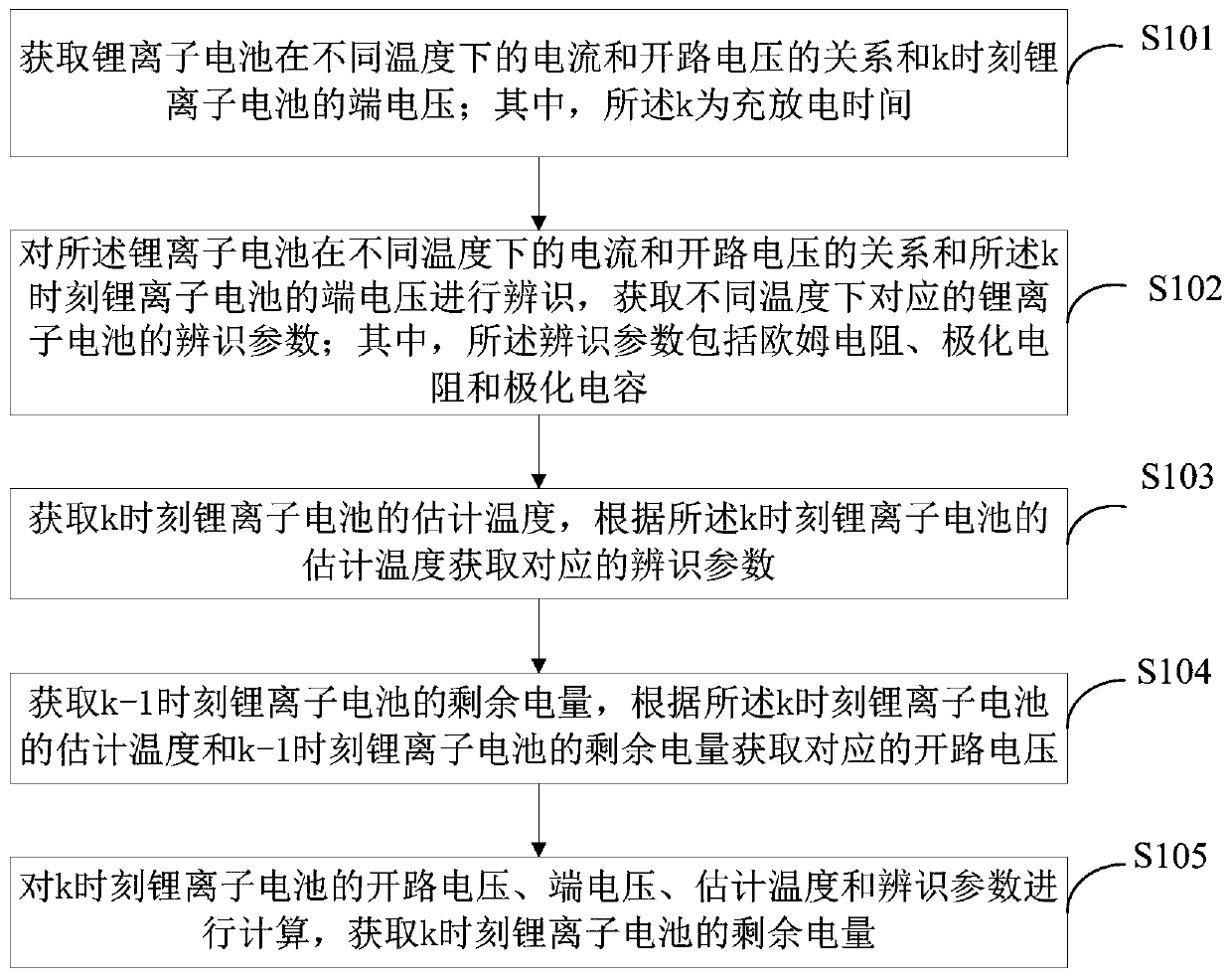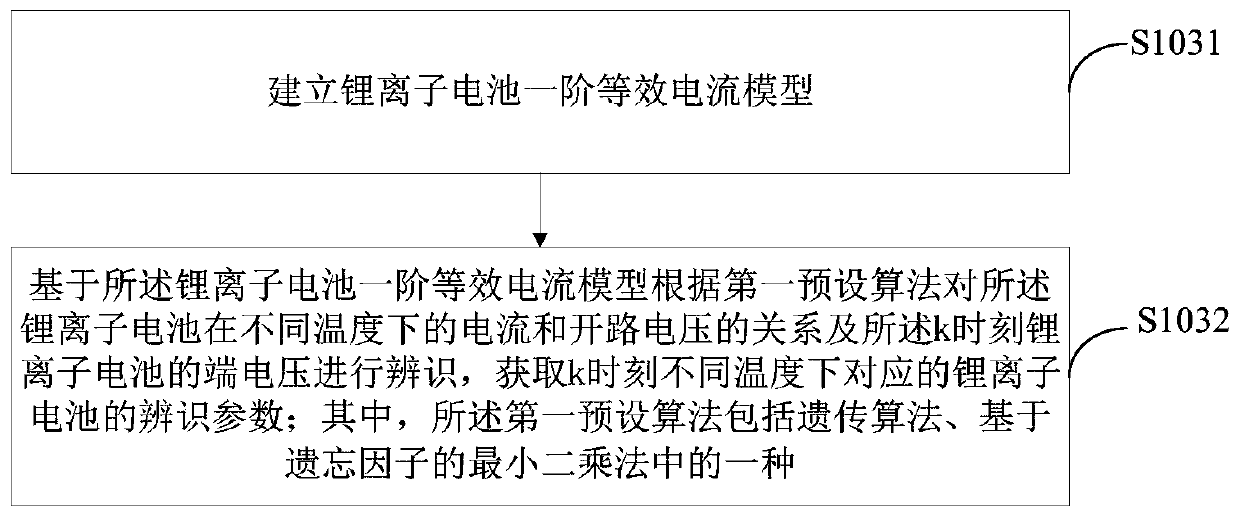Method and device for estimating SOC of lithium-ion battery, and terminal equipment
A technology for estimating the temperature of a lithium-ion battery, applied in the direction of measuring devices, measuring electricity, and measuring electrical variables, etc., can solve the problems of installation, reduce the efficiency of battery remaining power estimation, and the high cost of temperature acquisition modules/device, so as to improve efficiency and Accuracy, reducing installation complexity, and saving installation costs
- Summary
- Abstract
- Description
- Claims
- Application Information
AI Technical Summary
Problems solved by technology
Method used
Image
Examples
Embodiment 1
[0049] Such as figure 1 As shown, this embodiment provides a method for estimating the SOC of a lithium-ion battery, which can be applied to terminal equipment such as a lithium-ion battery intelligent management device, an electric motorcycle lithium-ion battery management device, and the like. The lithium-ion battery SOC estimation method provided in this embodiment includes:
[0050]S101. Obtain the relationship between the current and the open circuit voltage of the lithium-ion battery at different temperatures and the terminal voltage of the lithium-ion battery at time k; wherein, k is the charging and discharging time.
[0051] In a specific application, HPPC tests are carried out on lithium-ion batteries at different temperatures, and the test results are obtained: the relationship between the current and open-circuit voltage of lithium-ion batteries at different temperatures. The terminal voltage can be read directly. Among them, k is the charging and discharging tim...
Embodiment 2
[0065] Such as figure 2 As shown, this embodiment is a further description of the method steps in the first embodiment. In this embodiment, step S102 includes:
[0066] S1021. Establish a first-order equivalent circuit model of the lithium-ion battery.
[0067] In specific applications, such as image 3 Shown, E is the terminal voltage, V OCV is the open circuit voltage, R 0 is the ohmic internal resistance, R 1 C 1 Used to describe the polarization characteristics of the battery during charging and discharging, the polarization resistance R 1 The voltage across the V 1 , I is the charging and discharging current. R 0 , R 1 、C 1 is the parameter to be identified. According to the circuit principle, let τ=R 1 C 1 . Then the electrical characteristics of lithium-ion batteries can be described as:
[0068]
[0069] After discretizing the above formula, we can get:
[0070]
[0071] S1022. Based on the first-order equivalent circuit model of the lithium-ion...
Embodiment 3
[0088] Such as Figure 5 As shown, this embodiment is a further description of the method steps in the first embodiment. In this embodiment, step S103 includes:
[0089] S1031. Obtain an estimated temperature of the lithium-ion battery at time k-1 and a temperature parameter of the lithium-ion battery at time k.
[0090]In a specific application, the estimated temperature of the lithium-ion battery at time k-1 (that is, the last time) and the temperature parameter of the lithium-ion battery at time k are read.
[0091] S1032. Calculate the estimated temperature of the lithium-ion battery at time k-1 and the temperature parameter of the lithium-ion battery at time k according to a second preset algorithm, and obtain the estimated temperature of the lithium-ion battery at time k; wherein, the first The second preset algorithm is the law of Fourier thermodynamics.
[0092] In a specific application, the second preset algorithm includes but not limited to Fourier's law of therm...
PUM
 Login to View More
Login to View More Abstract
Description
Claims
Application Information
 Login to View More
Login to View More - R&D
- Intellectual Property
- Life Sciences
- Materials
- Tech Scout
- Unparalleled Data Quality
- Higher Quality Content
- 60% Fewer Hallucinations
Browse by: Latest US Patents, China's latest patents, Technical Efficacy Thesaurus, Application Domain, Technology Topic, Popular Technical Reports.
© 2025 PatSnap. All rights reserved.Legal|Privacy policy|Modern Slavery Act Transparency Statement|Sitemap|About US| Contact US: help@patsnap.com



